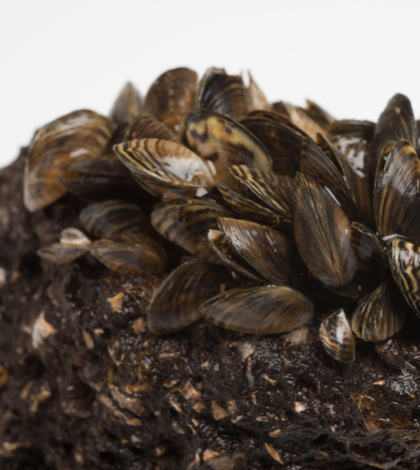More than $4 million was recently allocated by the Bureau of Reclamation in the fight against invasive quagga and zebra mussels in the western United States. The newly released funds build on the $1 million allocated in 2017 to support initiatives by the federal government, as well as work by the Western Governors’ Association, western states, and tribes to protect western ecosystems, water infrastructure, and hydroelectric facilities from invasive mussels.
“For more than a century, Reclamation and its partners in the West have invested in water infrastructure that is today at risk from invasive quagga and zebra mussels,” Commissioner Brenda Burman said. “The funding we are announcing today will be used on efforts to prevent their spread while improving ways to manage facilities when the first sign of these invasive mussels is detected.”
The $4-million-plus allocation will be used by federal, state, and tribal projects to prevent, contain, control, and monitor invasive quagga and zebra mussels in the West. The funding advances actions announced by Secretary of the Interior Ryan Zinke in June 2017 as part of the initiative called “Safeguarding the West: Actions to Strengthen Federal, State, and Tribal Coordination to Address Invasive Mussels.”
A partial summary of the funded projects directly impacting California includes:
- Purchasing inspection and decontamination stations to inspect and decontaminate boats leaving the lower Colorado River in California and Nevada, including supporting the National Park Service at Lake Mead National Recreation Area.
- Analyzing water quality to determine which water bodies should be prioritized for invasive mussel monitoring and prevention in California.
Other western U.S. projects outside of California that are being funded by the Reclamation allocation include:
- Continuing and enhancing water quality and quagga mussel monitoring program at high-priority programs in the Pacific Northwest and various reservoirs in the upper Colorado River Basin.
- Developing vulnerability assessments for facilities and infrastructure at risk of mussel infestation in the Columbia River Basin.
- Assisting the State of Arizona in providing law enforcement support at inspection stations.
- Funding research for the State of Montana and Reclamation on viability of veligers in residual water in boats.
- Supporting watercraft inspection stations at Reclamation reservoirs in Nebraska and Kansas.
- Implementing the state Aquatic Invasive Species Management Plan at water bodies owned by Reclamation in Utah.
- Supporting the Salish Kootenai Tribe at Flathead Lake Aquatic Invasive Species program.
- Conducting watercraft inspections at Navajo and Elephant Butte reservoirs in New Mexico.
Although freshwater mollusks are native to eastern Europe they were originally introduced in the U.S. around 1989 allegedly through ballast water in the Great Lakes. They found their way to California and were first discovered in 2007. Numerous efforts have been launched to discover, identify and contain the invasive mussels but they have been confirmed in more than 40 waterways around the state, primarily in Southern California. Most recently they were found at the Lake Mendocino boat ramp in early June in Northern California.
Invasive mussels are known to be prolific breeders and settle on or within water facility infrastructure such as water intakes, gates, diversion screens, hydropower equipment, pumps, pipelines and boats. Infested waters and hydropower infrastructure can fail or choke off water transmissions. The mussels also negatively impact the natural ecology, which can be detrimental to native and endangered species, including native fisheries.
“The fight against invasive mussels in the West requires collaboration and partnership at all levels of government, including, importantly, those between Reclamation and Western states,” said the Western Governors’ Association. “With this new funding, western states will be able to enhance invasive mussel management at many levels, including research, monitoring, prevention, and enforcement.”
 California Water News Daily Your Source For Water News in California
California Water News Daily Your Source For Water News in California


